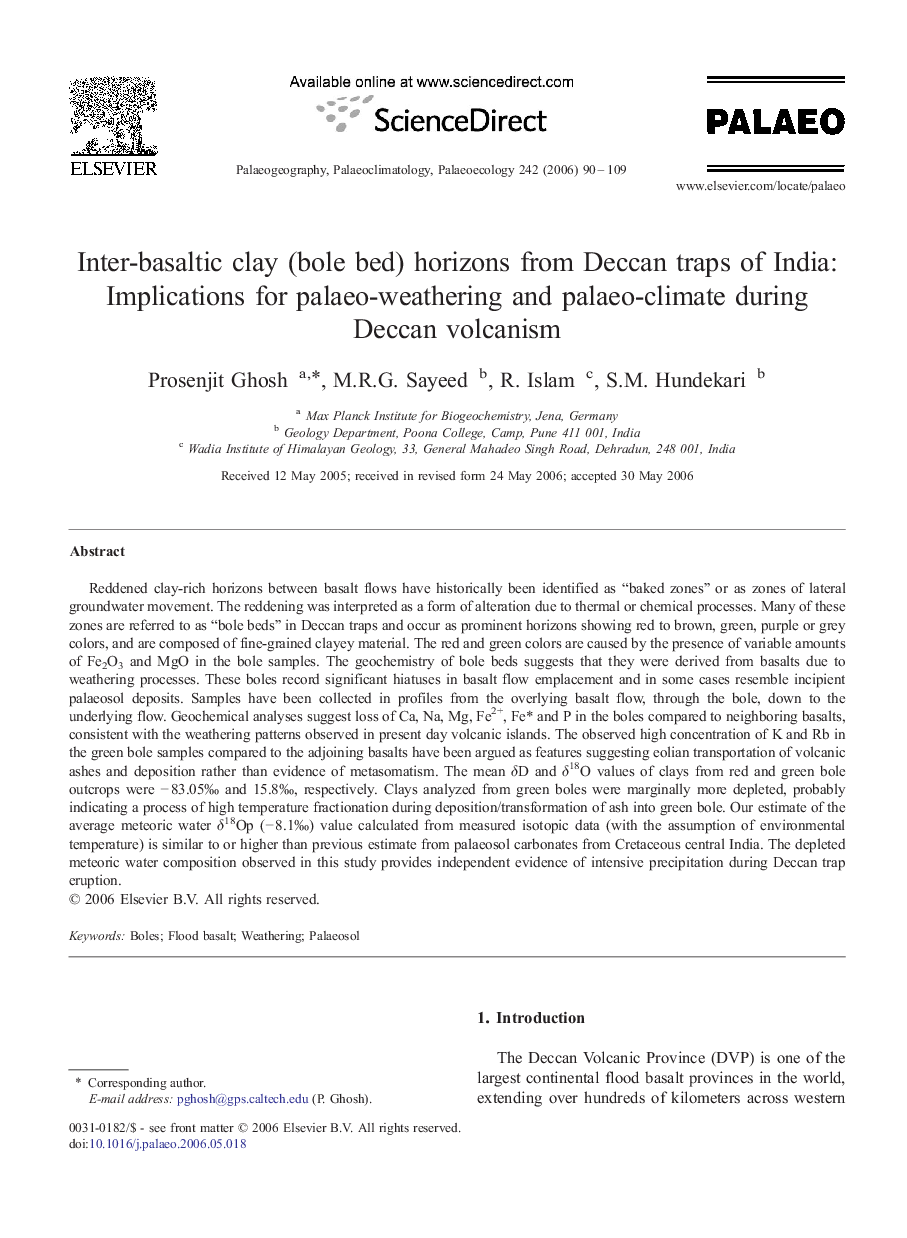| کد مقاله | کد نشریه | سال انتشار | مقاله انگلیسی | نسخه تمام متن |
|---|---|---|---|---|
| 4469125 | 1622363 | 2006 | 20 صفحه PDF | دانلود رایگان |

Reddened clay-rich horizons between basalt flows have historically been identified as “baked zones” or as zones of lateral groundwater movement. The reddening was interpreted as a form of alteration due to thermal or chemical processes. Many of these zones are referred to as “bole beds” in Deccan traps and occur as prominent horizons showing red to brown, green, purple or grey colors, and are composed of fine-grained clayey material. The red and green colors are caused by the presence of variable amounts of Fe2O3 and MgO in the bole samples. The geochemistry of bole beds suggests that they were derived from basalts due to weathering processes. These boles record significant hiatuses in basalt flow emplacement and in some cases resemble incipient palaeosol deposits. Samples have been collected in profiles from the overlying basalt flow, through the bole, down to the underlying flow. Geochemical analyses suggest loss of Ca, Na, Mg, Fe2+, Fe⁎ and P in the boles compared to neighboring basalts, consistent with the weathering patterns observed in present day volcanic islands. The observed high concentration of K and Rb in the green bole samples compared to the adjoining basalts have been argued as features suggesting eolian transportation of volcanic ashes and deposition rather than evidence of metasomatism. The mean δD and δ18O values of clays from red and green bole outcrops were − 83.05‰ and 15.8‰, respectively. Clays analyzed from green boles were marginally more depleted, probably indicating a process of high temperature fractionation during deposition/transformation of ash into green bole. Our estimate of the average meteoric water δ18Op (− 8.1‰) value calculated from measured isotopic data (with the assumption of environmental temperature) is similar to or higher than previous estimate from palaeosol carbonates from Cretaceous central India. The depleted meteoric water composition observed in this study provides independent evidence of intensive precipitation during Deccan trap eruption.
Journal: Palaeogeography, Palaeoclimatology, Palaeoecology - Volume 242, Issues 1–2, 24 November 2006, Pages 90–109